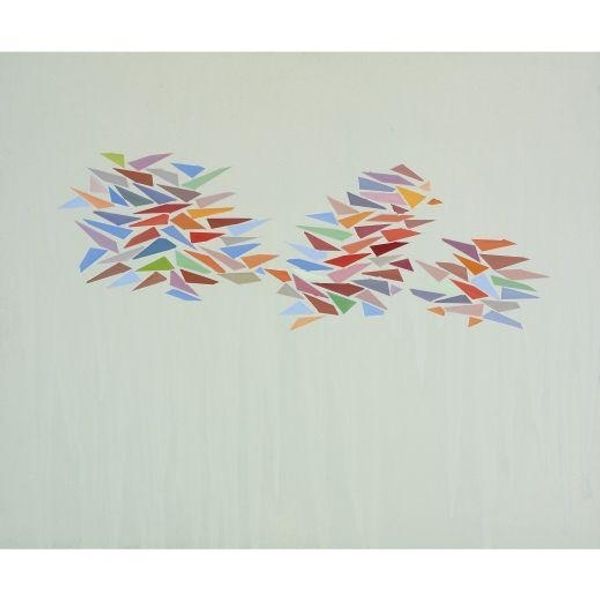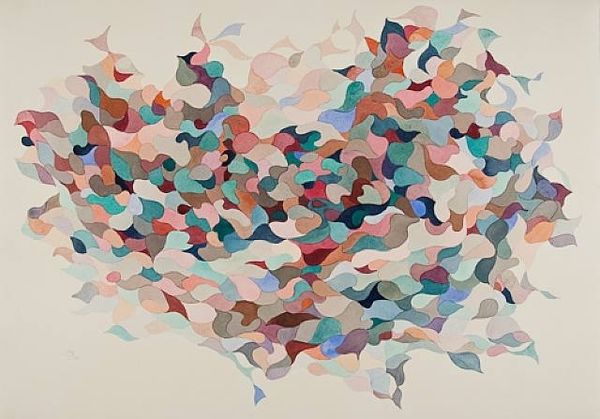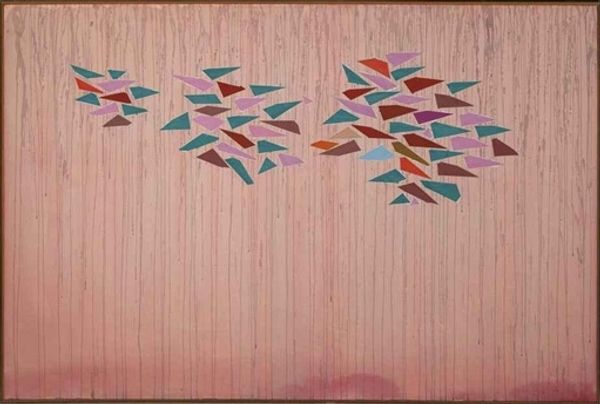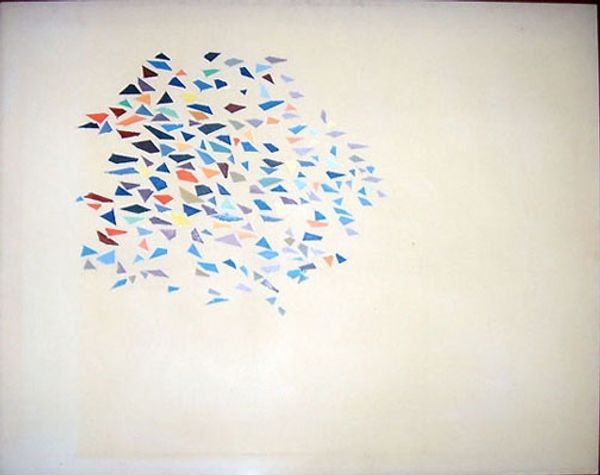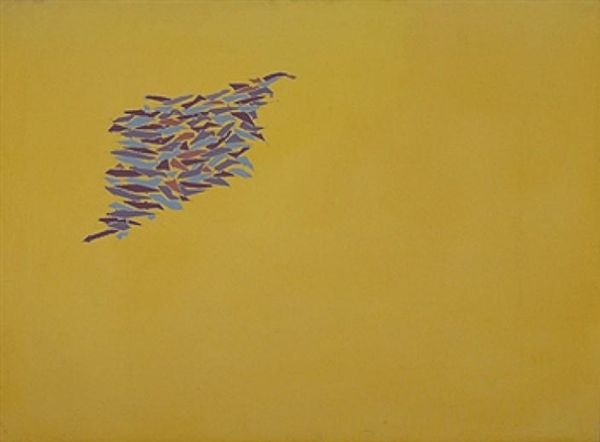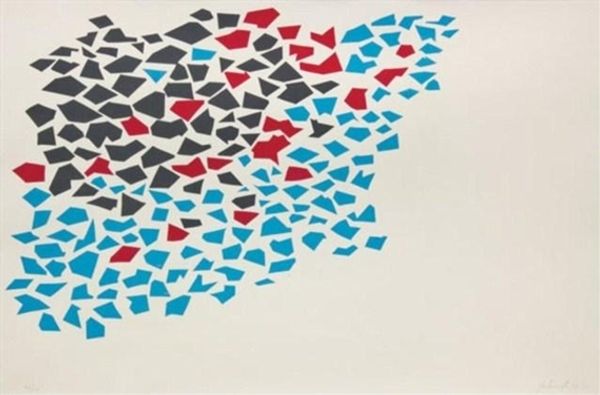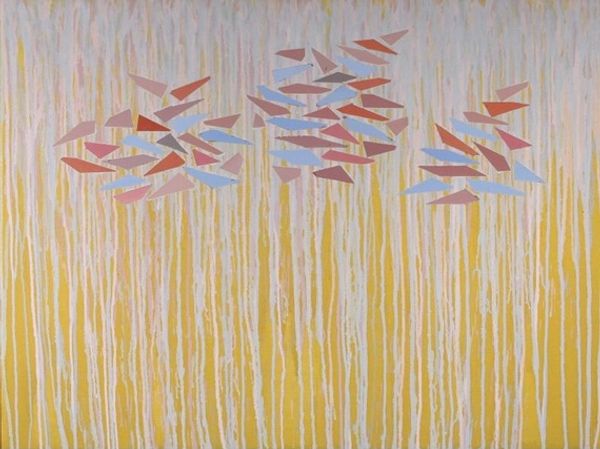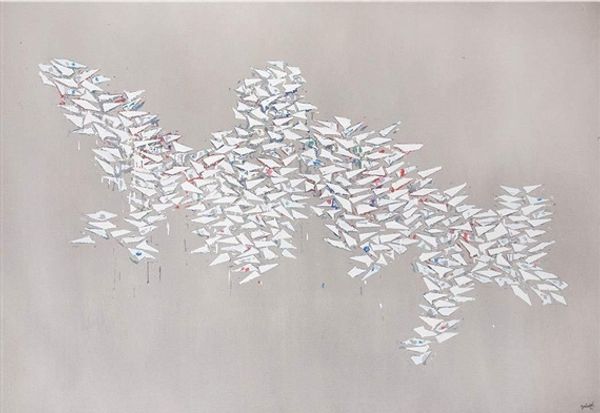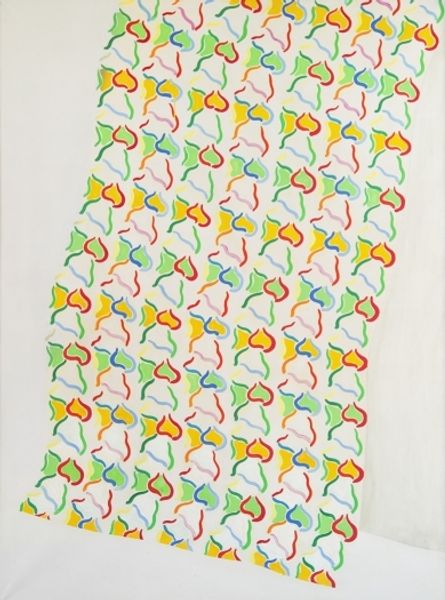
Copyright: Robert Goodnough,Fair Use
Curator: Robert Goodnough's "Colors on Gray," painted in 1976 using acrylic, immediately strikes me as a visual puzzle. It's cheerful but also... somehow contained. Editor: The interplay of vibrant triangular shapes against the muted gray canvas certainly creates an intriguing dynamic. There’s almost a tension there. What organizing principles can you detect at play in its visual vocabulary? Curator: Well, the initial clustering of shapes organizes into three distinct masses, which suggests a progression, or perhaps an evolution of form. It's intriguing, because there's no obvious hierarchy to the colors. Each triangle retains its individuality, creating a democratic surface. Editor: I find myself questioning the seemingly arbitrary arrangement of these geometric forms. In 1976, ideas surrounding systemic change and social structures were paramount. Do you see any echoes of that discourse within this composition? Could it be interpreted as a fragmented society, where individual components retain unique identities but struggle to coalesce into a unified whole? Curator: That’s an interesting proposition. While I concede that the scattered arrangement might lend itself to such an interpretation, I am more inclined to consider how the interaction of these color relationships creates perceptual ambiguity, playing into ideas popularized by Hard-Edge painting. Do we see receding or projecting planes? How does the artist force a response? Editor: But isn't that a cop-out, a convenient avoidance of confronting broader societal issues? Doesn’t all artistic output—explicitly or not— inevitably grapple with and reflect these issues? We shouldn't shy away from asking what this artist’s intentions were, but what his art nonetheless conveys about his present-day social milieu. Curator: Perhaps, but let’s not reduce the aesthetic experience to mere social commentary. Goodnough's carefully calibrated chromatic balance also encourages contemplative meditation. Editor: Very well. In conclusion, viewing Goodnough’s work through multiple interpretative lenses offers rich possibilities. Curator: Agreed. "Colors on Gray" remains a fascinating piece that invites continuous viewing, encouraging layered interpretive insights from viewers over time.
Comments
No comments
Be the first to comment and join the conversation on the ultimate creative platform.
